





| New Zealand Fantail (Rhipidura fuliginosa (Sparrman, 1787)) |






|
|
Scientific name: Rhipidura fuliginosa (Sparrman, 1787) Common name: New Zealand Fantail French name: Rhipidure à collier Order: Passeriformes Family: Rhipiduridae Size: Body size: 14 to 17 cm (half of this is for the tail); Weight: 6.5 to 9 g. Habitat: Wooded areas, forests, parks and gardens. Food: Insects often captured in flight and sometimes on the ground, spiders. Nesting: The nest, built by the female, is a small circular cup made of fine plants and spider webs. It can be recognized by the fine plant filaments that hang underneath. It is placed in the fork of a tree or shrub. There are 2 to 5 clutches of 2 to 5 eggs per year. Migration: Sedentary Geographic area: New Zealand and adjacent islands. |
The New Zealand Fantail exists in two main forms, a coloured form (the most widespread) and a dark form (rare on the North Island and representing approximately 25% of the population on the South Island). The coloured form has an olive brown upper body and dark brown wings with a double white wing bar. The underside of the body is light red. The greyish-brown throat is underlined by a dark grey collar. The head is blackish grey with well-marked white eyebrows. On the tail the tail feathers are white except for the central tail feathers which are black. The outer tail feathers have a dark border. The tail is very often fanned out. The dark form has a blackish upper body and a brown lower body. There may be a small white spot at the back of the eye. The tail is black. Females are paler than males. Juveniles have buff-brown eyebrows. |
| [To know more about the New Zealand Fantail] [Next picture] [Top] |
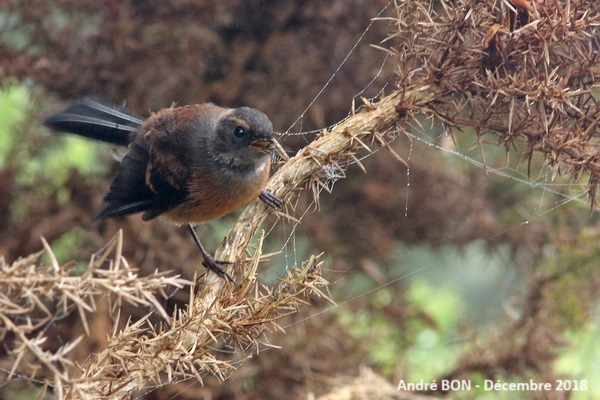
|
Here is my first observation of a New Zealand Fantail. I had initially thought of the dark form but now, unless I am mistaken, I think more of an immature of the coloured form because of the traces of white that we can see on the tail. |
| [To know more about the New Zealand Fantail] [Next picture] [Previous picture] [Top] |

|
The upper part of the body is blackish and there is a small white spot above the eye. Although there are white highlights on the tail I think we have the dark form here. |
| [To know more about the New Zealand Fantail] [Next picture] [Previous picture] [Top] |
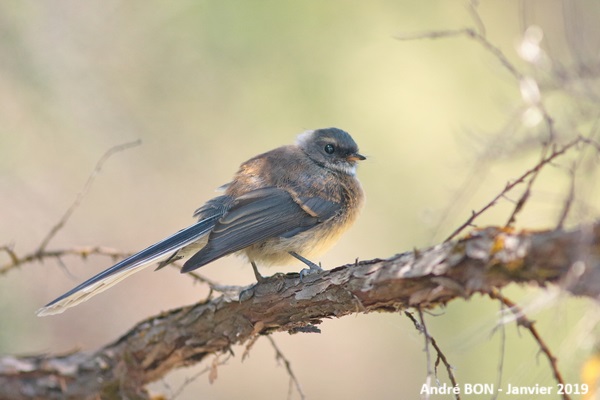
|
The buff-brown eyebrow here must indicate a juvenile New Zealand Fantail. |
| [To know more about the New Zealand Fantail] [Next picture] [Previous picture] [Top] |
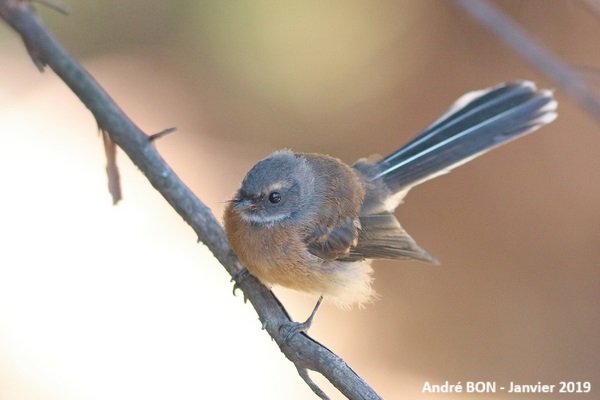
|
No matter how much I hoped and asked, I didn't get a fan-like tail deployment :-( |
| [To know more about the New Zealand Fantail] [Next picture] [Previous picture] [Top] |
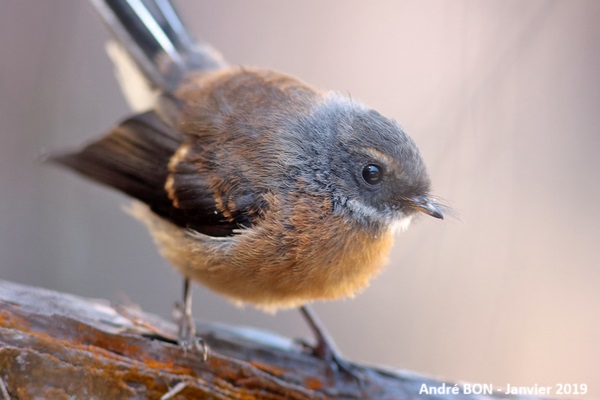
|
Is it the fact that it is a juvenile, but I managed to get very close! |
| [To know more about the New Zealand Fantail] [Previous picture] [Top] |
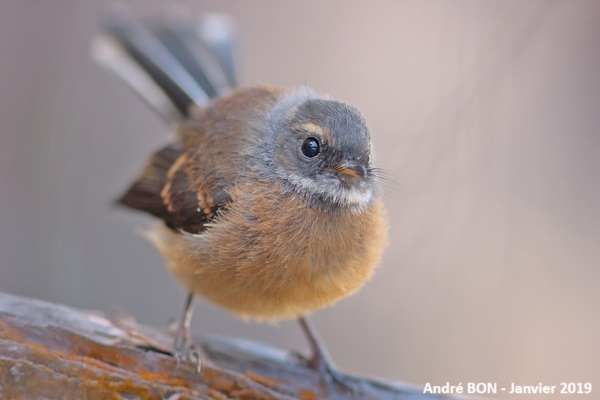
|
The last photo in the series before everyone goes their separate ways. |